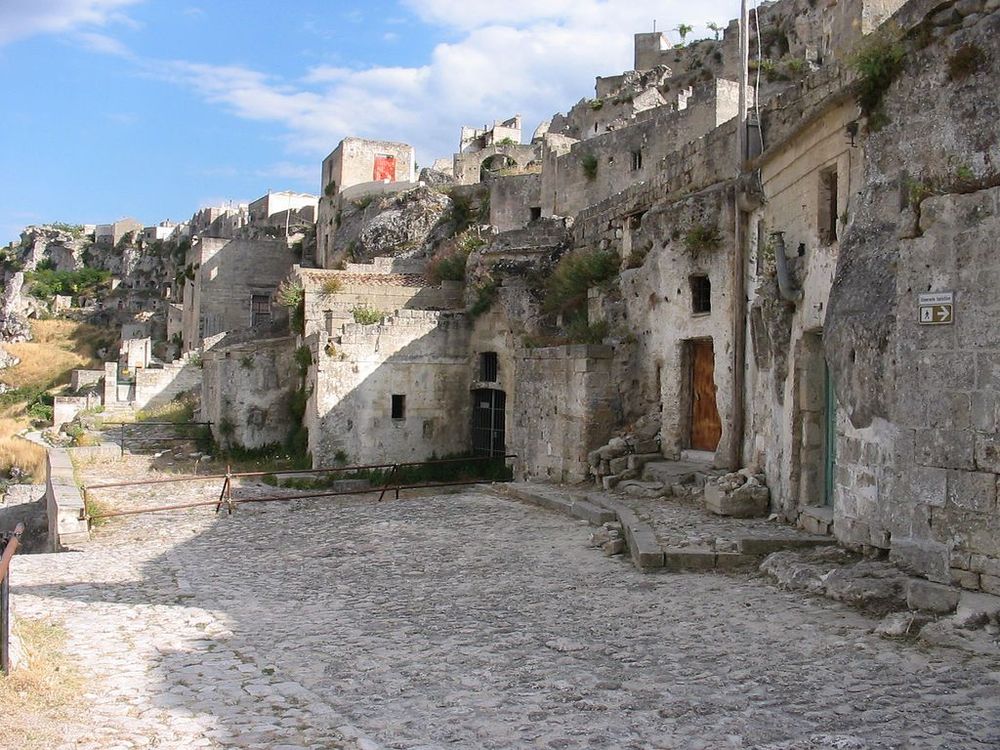One of the most unusual places of the South of Italy – the town of Matera relating to Bazilikat’s district. And, more precisely, its historical part under Sassi di Matera’s name, since 1993 included in the World heritage of UNESCO.
She is well familiar to film fans – at least visually: exactly here “Gospel of Matthew” of Pierre Pasolini and “Passion of the Christ” of Mel Gibson were shot. The close mixed small streets with white calcareous houses were ideally suited for a reconstruction of the atmosphere of ancient Judea.
However, this place reminds at the same time both a huge Roman amphitheater, and the Moroccan towns, and even one of the worlds of “The divine comedy”. But, first of all, Sassi di Matera – a unique kingdom of the calcareous rocks rising on the bank of Gravin’s small river, and the caves hollowed in them which people turned into the dwellings since the Neolithic era (9000 years ago).
Sassi di Matera – a unique kingdom of the calcareous rocks rising
The word “sass” in translation from Italian means “stones”. It is really stone fairy tale – mysterious and in something gloomy. Here ways of a set of civilizations met: fragments of ancient irrigational system adjoin to the remains of the Roman military trenches, from walls of underground cells watch faces of the Byzantine Saints, and in the Cathedral of the 13th century still bend a knee before Madonna’s statue. Churches and chapels, gardens and grottoes, houses without registration number and streets without names are also piled up here at each other as traces of the different people inhabiting once Matyora are mixed up: Greeks, Romans, Normans, Spaniards, modern Italians. And stones remember everything..
Residents of Matera long since got used to live in two worlds. The “top” city with magnificent palaces – for the aristocracy, a cave and a vault – for peasants and handicraftsmen. Up to the middle of the XX century local poor people continued to huddle in houses caves – without windows, electricity and a water supply system, in the dark and dampness, side by side with animals. Grandiose scandal burst in the fifties: the writer Carlo Levi shaken by terrible living conditions in the catacomb town published the novel “Christ Stopped in Eboli”. Long trial with participation of the Italian authorities began thanks to what thousands of people could move from an underground gloom to social apartments.
Today the most part of the population of Matera safely lives in modern part of the city, and Sassi remains permanently attractive to tourists. It show the saved houses grottoes, to church – elevated and cave (in the last altars are cut down directly in the rock, and function of columns is carried out by stalactites and stalagmites), ancient frescos on cave walls. There is and here a house museum in which the typical dwelling of poor people of Sassi is recreated. Persons interested can also feel delights of cave life, having spent the night in unique underground hotel under the name Le Grotte Della Civita. In it 18 numbers belonging, by the way, to the class “suite”. Home decoration in them on a minimum, but there are a shower and Internet access.
